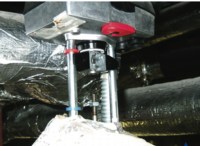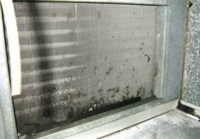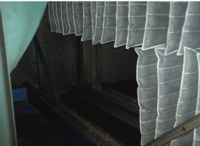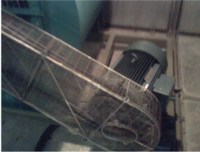The realities of running buildings efficiently

A missing linkage between a control valve and its actuator, as discovered when Darren Jones was working for a large pharmaceutical company in the south of England, is not the kind of fault that would readily be apparent from the supervisor of a building-management system.
As an experienced energy manager, Darren Jones believes that too much faith is placed in the building-management system to achieve the efficient operation of building-services systems. He argues the need to get away from the central supervisor and find out what is actually happening in the building.My recent background of managing energy for a large number of sites in the south east, as well as chairing the South Thames Energy & Environmental Forum (a group of about 30 energy managers) has given me a useful insight into the pros and cons of building and energy-management systems (BEMS). Throughout I have been asking myself the question, ‘Do they really advance the cause of energy saving?’ Energy managers have mixed views. Like all established technology, they have a useful role to play, but I sense that the general consensus is that the BEMS is only as good as its control strategy and the physical controls that are in place. When a good control strategy is in place and system controls are well maintained and functioning correctly, building and energy-management systems can be very effective. They allow engineering and energy-management staff to remotely interrogate the status of plant under their surveillance, and conveniently adjust setpoints that can lead to improved plant efficiency — all without the need to leave the office. But don’t think that the job ends there. In my view there is definitely a need to visually inspect plant regularly. What is seen to be happening from the BEMS supervisor is very often not what is actually happening in reality, as the following examples show. • Set points have been adjusted to compensate for occupants’ individual heating needs.
• Offsets have been placed on failing pressure, humidity and temperature sensors.
• Dead bands have accidentally been removed by untrained maintenance staff.
• Bypass valves have been manually opened to overcome faulty control-valve actuators.
Control strategies are very often extremely complex. More often than not, they are not understood by the maintenance personnel that have to attend to them. This leads to frustration, and in many cases it is the inappropriate use or complete avoidance of the BEMS that often leads to the bypass of control valves to overcome problems. BEMS engineers on the other hand tend to get bogged down with software issues during service visits. In my experience, they sit at their computers for most their visit and tend not to inspect the physical controls and how the plant is actually running in reality.
 |
Dirty and clogged coil faces on heating and cooling batteries are often found — resulting in excessive system resistances and consequent poor system performance. |
P+I control loops, local area networks, display and directory modules all sound very impressive — but what good is all this technical input if the control actuator motor has burnt out? There is often a lack of communication between the engineer who is responsible for the BEMSs and those responsible for maintenance; both are inclined to do their own thing without any coordination. I and, I am pleased to say, a growing number of energy managers and HVAC engineers, are turning towards a more invasive approach. We believe that by visually inspecting HVAC plant both internally and externally we can pick up and identify a whole host of issues relating to the efficiency of the plant. This approach, in addition to the plant inspections, also involves measuring the power consumed by fan motors as well as taking temperature, pressure and humidity readings between each component of an air-handling unit during the audit and comparing these with what the BEMS is reporting. We also look at BEMS setpoints, dead bands, time schedules and controls strategies to identify quick-win opportunities.
 |
Problems with air quality in a large retail store were found to be due to the collapse of a bank of air filters in an air-handling unit — resulting in debris being scattered across the fan and throughout the fan chamber. |
There are countless examples of how this approach works in practice, and I have chosen several very recent instances to prove the point. Before undertaking a survey in a large office building, we were advised that there was a problem regarding the air quality. Our internal inspection of the air-handling unit soon revealed that a bank of bag filters had collapsed, resulting in debris being scattered across the supply fan and throughout the supply fan chamber. The apparent build-up of dust and particulates observed in the extract chamber confirmed the fact that unfiltered air had been supplied to areas served by this air-handling unit for some time. Whilst this problem would almost certainly have been picked up on a scheduled maintenance visit, it would not have been identified from the interrogation of the BEMS! Many BEMS systems monitor the pressure differential across filter media, which automatically brings up a dirty-filter alarm when pressure limits are exceeded. It is ironic, however, that regardless of how dirty the remaining filters become on this unit, because some are missing, differential pressures will remain constantly low, and no alarm will be raised.
 |
Although the building-management system did not indicate any problem at a large office site in London, the removal of a number of damper actuators prevented the recirculation of conditioned air. |
When we arrived recently at a large London office block, it seemed from interrogating the BEMS that the services were operating without any fault. However, on visually inspecting the site a number of damper actuators had been removed — preventing any re-circulation of conditioned air. At a large retail store, the drive motor had actually come away from its base and was no longer driving the fan. I am also reminded of other recent and not uncommon observations such as belts missing, belts slipping, spilt discharges on fan outlets and seized damper actuators. Also on my list are dirty and clogged coil faces on heating and cooling batteries; they are very often found and result in excessive system resistances, leading to poor system performance.
 |
And just in case you might have been wondering why the building was getting so stuffy, this photograph taken in a large retail store shows the drive motor had come away from its base and was no longer driving the fan. |
Most of these examples are relatively predictable, although a bird’s nest I found recently wrapped into the pre-heat coil of an AHU system would not fit into that category. I wonder what a BEMS system might have made of that? In conclusion, I believe that it is essential to carry out plant inspections and measurement of temperatures, pressures and humidity to enable a accurate and useful report to be provided to the energy or facilities manager. This ‘invasive’ approach will always reveal weaknesses that will not be evident from the BEMS, and is a very prudent investment that will more than pay for itself. Conversely, we should be cautious about relying too heavily on the building and energy-management system.
Darren Jones is operations manager with Efficient Air.
Related links:
Related articles:













